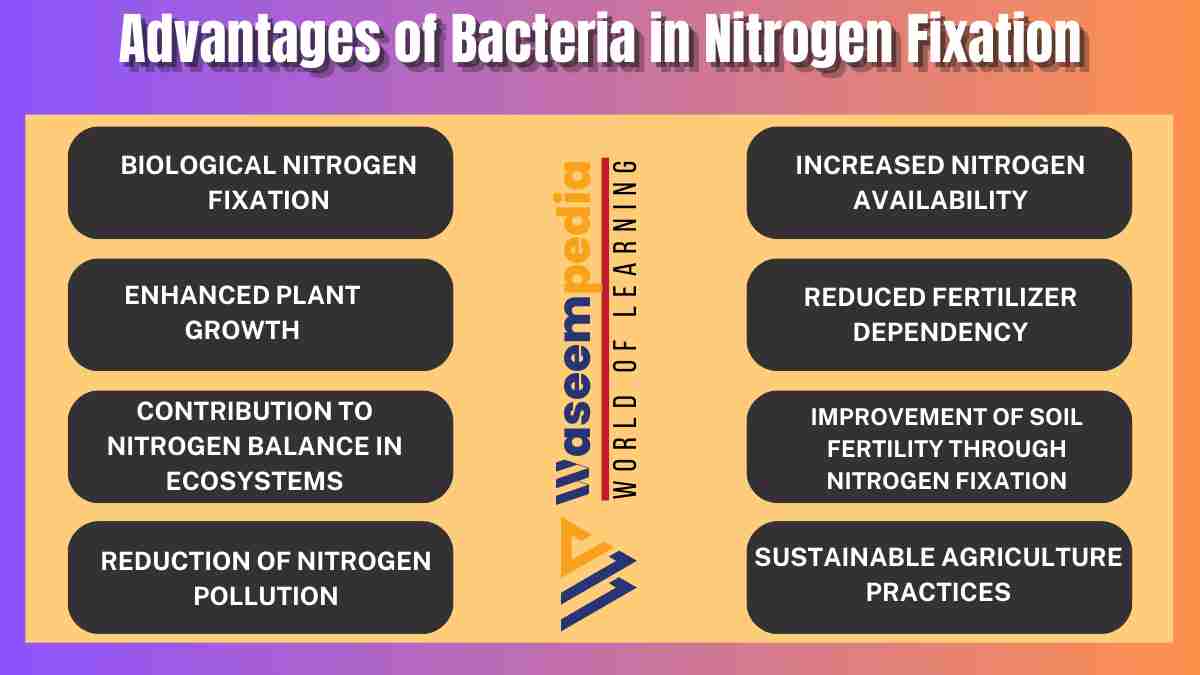The advantages of bacteria in nitrogen fixation are invaluable to both natural ecosystems and agricultural practices. Their ability to convert atmospheric nitrogen into biologically useful forms enhances soil fertility, reduces the reliance on synthetic fertilizers, and promotes sustainable resource management.
Furthermore, nitrogen-fixing bacteria contribute to the overall health and productivity of ecosystems, playing a crucial role in maintaining the balance of nutrients and supporting diverse biological communities.
Nitrogen is an essential element for the growth and development of living organisms. It is a vital component of proteins, nucleic acids, and other cellular structures. However, nitrogen gas (N2) in the atmosphere is not directly available to most organisms.
This is where the process of nitrogen fixation comes into play, and bacteria play a crucial role in this process. In this article, we will explore the advantages of bacteria in nitrogen fixation, highlighting their significance in various ecosystems and agricultural practices.
Introduction of Bacteria in Nitrogen Fixation
Nitrogen fixation is the conversion of atmospheric nitrogen into a form that can be utilized by living organisms. Bacteria are remarkable microorganisms capable of performing this process efficiently. Through various mechanisms, they transform inert atmospheric nitrogen into forms such as ammonia (NH3) or nitrate (NO3-), which can be readily used by plants and other organisms.
What is Nitrogen Fixation?
Nitrogen fixation is a vital biological process that converts atmospheric nitrogen gas (N2) into a form that can be utilized by living organisms. It plays a crucial role in maintaining the nitrogen cycle and the overall balance of nitrogen in ecosystems. Without nitrogen fixation, the availability of nitrogen for biological processes would be severely limited.
10 Advantages of Bacteria in Nitrogen Fixation
10 Advantages of Bacteria in Nitrogen Fixation are as following.
1. Bacteria as Nitrogen Fixers
Certain bacteria possess the unique ability to convert atmospheric nitrogen into biologically useful forms. These nitrogen-fixing bacteria play a fundamental role in nitrogen cycling and have developed specialized mechanisms to carry out this process efficiently.
2. Symbiotic Relationships
Many nitrogen-fixing bacteria form symbiotic relationships with plants. One of the most well-known examples is the symbiosis between leguminous plants (such as soybeans, clover, and peas) and rhizobia bacteria. The bacteria infect the roots of these plants and form nodules, where they convert atmospheric nitrogen into ammonia, benefiting both the bacteria and the host plant.
3. Mutuality Associations
Apart from legumes, certain other plants, such as alders and some tropical trees, also form mutualistic associations with nitrogen-fixing bacteria. These plants provide a suitable environment for the bacteria to thrive, while the bacteria supply them with a vital nutrient source—fixed nitrogen.
4. Free-Living Nitrogen Fixers
In addition to symbiotic relationships, there are free-living nitrogen-fixing bacteria present in various environments, including soil and water. These bacteria have the ability to independently fix nitrogen without the presence of a host organism. They contribute to the overall nitrogen availability in the ecosystem.
5. Nitrogen Fixation in Agricultural Practices
The use of nitrogen-fixing bacteria in agriculture has proven to be highly beneficial. By inoculating legume seeds or applying bacterial cultures to the soil, farmers can enhance nitrogen fixation and reduce the need for synthetic nitrogen fertilizers. This not only improves soil fertility but also reduces environmental pollution and production costs.
6. Environmental Impact
The advantages of bacteria in nitrogen fixation extend beyond agriculture. Nitrogen-fixing bacteria help to enrich the soil with biologically available nitrogen, promoting the growth of other plants and enhancing overall ecosystem productivity. They contribute to the restoration of degraded lands and play a vital role in the successional development of ecosystems.
7. Industrial Applications
Bacteria involved in nitrogen fixation have significant industrial applications. For example, certain strains of bacteria are used in the production of nitrogen-based fertilizers, contributing to global food production. Additionally, nitrogen-fixing bacteria are being explored for their potential use in biofuels production, as they can reduce the need for energy-intensive nitrogen fixation processes.
8. Role in Ecosystems
Nitrogen-fixing bacteria are key players in the functioning of ecosystems. By making atmospheric nitrogen available to other organisms, they support the growth and survival of diverse plant and animal communities. They also influence nutrient cycling and facilitate the establishment of complex food webs.
9. Challenges and Limitations
Although bacteria provide numerous advantages in nitrogen fixation, there are also challenges and limitations associated with this process. Environmental factors, such as soil acidity and availability of essential nutrients, can influence the efficiency of nitrogen fixation. Additionally, competition with other microorganisms and the need for energy-intensive processes can limit the overall nitrogen fixation rates.
10. Future Research and Innovation
Ongoing research aims to further improve our understanding of nitrogen fixation and explore new avenues for its application. Scientists are investigating novel bacteria strains, optimizing symbiotic interactions, and developing sustainable agricultural practices that maximize the benefits of nitrogen fixation.
Continued innovation in this field holds great promise for addressing global food security and environmental sustainability challenges.

